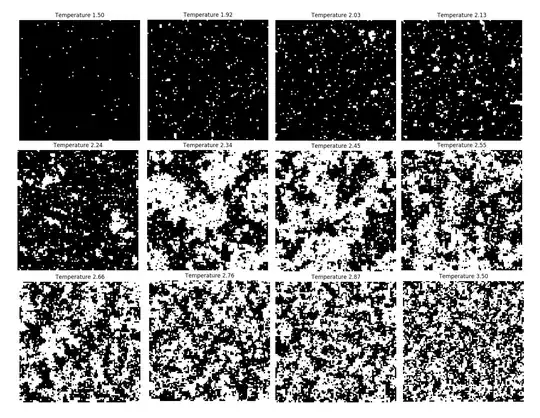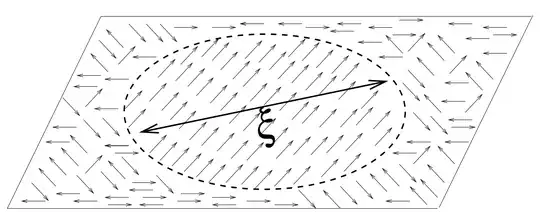The two-dimensional square-lattice Ising model, which is a simplified model of reality, exhibits a phase transition. Onsager showed that there is a specific temperature, called the Curie temperature or critical temperature $T_c$, below which the system shows ferromagnetic long-range order. Above it, it is paramagnetic and is disordered.
At zero temperature, every spin is aligned in either +1 (or -1) direction. When we increase the temperature, keeping below $T_c$, some spin of starts orienting themselves in the opposite direction. The typical length scale of cluster formation is called correlation length, $\xi$, and it grows as we increase the temperature and diverges at $T_c$. If we go beyond $T_c$, the correlation length starts decreasing, and at infinite temperature, it becomes zero.

2-dimensional Ising model simulation on 100x100 lattice. Left to right and top to bottom, the temperature is increasing. At equilibrium, when $T<T_c$, typical configurations in the + phase look like a ''sea'' of +1 spins with ''islands'' of -1 spins. For larger lattice sizes, the ''islands'' have ''lakes'' of +1 spins. In this picture, +1 spins are in black, and -1 spins are in white. Each connected white object is a cluster.
Formally:
The two-point correlation function is defined as
\begin{equation}\label{Gamma}
\Gamma(i-j)=\langle S_iS_j\rangle-\langle S_i\rangle\langle S_j\rangle
\end{equation}
The correlation length, $\xi(T)$ is characteristic length at which the value of correlation function $\Gamma(i)$ has decayed to $e^{-1}$:
$$\Gamma(i)\sim \exp\Bigg(\frac{|i|}{\xi(T)}\Bigg)$$
And
\begin{equation}\label{correlationlength}
\xi(T)\sim |T-T_c|^{-\nu}
\end{equation}
For $d=2$, we have $\nu=1$.

